Xenosaga is a role-playing video game series developed by Monolith Soft and primarily published by Namco. Forming part of the wider Xeno metaseries, Xenosaga is set in a science fiction universe and follows a group of characters as they face both a hostile alien race called the Gnosis and human factions fighting for control of the Zohar, an artifact connected to a god-like energy called U-DO. Gameplay across the series is similar, with the characters being guided through a linear narrative and fighting enemies using a turn-based combat system. The party fights both on foot and in a variety of mechs.
Super Robot Wars, known in Japan as Super Robot Taisen, is a series of Japanese tactical role-playing video games produced by Bandai Namco Entertainment, formerly Banpresto. Starting out as a spinoff of the Compati Hero series, the main feature of the franchise is having a story that crosses over several popular mecha anime, manga and video games, allowing characters and mecha from different titles to team up or battle one another. The first game in the franchise was released for the Game Boy on April 20, 1991. Later spawning numerous games that were released on various consoles and handhelds. Due to the nature of crossover games and licensing involved, only a few games have been released outside Japan, and in English. The franchise celebrated its 25th anniversary in 2016, and its 30th anniversary in 2021.

Banpresto Co., Ltd. was a Japanese video game developer and publisher headquartered in Shinagawa, Tokyo. It had a branch in Hong Kong named Banpresto H.K., which was headquartered in the New Territories. Banpresto was a partly-owned subsidiary of toymaker Bandai from 1989 to 2006, and a wholly-owned subsidiary of Bandai Namco Holdings from 2006 to 2008. In addition to video games, Banpresto produced toys, keyrings, apparel, and plastic models.
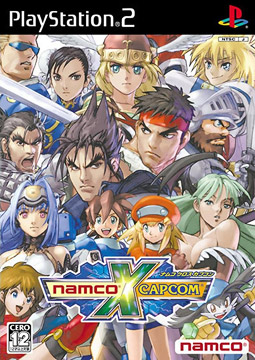
Namco × Capcom is a tactical role-playing (RPG) crossover video game developed by Monolith Soft for the PlayStation 2 and published by Namco in 2005. The gameplay combines tactical RPG and action sequences during battles, featuring characters from video game series owned by Namco and Capcom. The narrative sees original characters Reiji Arisu and Xiaomu, operatives for paranormal investigative group Shinra, confront distortions bringing characters from other realities into their own.
Cyber Troopers Virtual-On is a series of video games created by Sega AM3. The series was created by Juro Watari. The original series was first published for arcades in January 1996. The game features fast, action-oriented gameplay requiring quick reflexes. It has seen five installments to date and has been ported to several video game consoles.

Brain Powerd is a Japanese anime television series created by Sunrise. It was directed and written by Gundam creator Yoshiyuki Tomino and features mecha designs by Mamoru Nagano, character designs by Mutsumi Inomata, and music by Yoko Kanno. The 26 episodes of the series originally premiered on the satellite channel WOWOW between April and November 1998. The series was also aired across Japan on the anime network Animax, which also later broadcast the series across its respective networks worldwide, including its English language networks in Southeast Asia and South Asia. Animax aired Bandai Entertainment's localization, the series' English language television premiere. The anime series was licensed by Bandai and distributed across the region on DVD under the title Brain Powered.
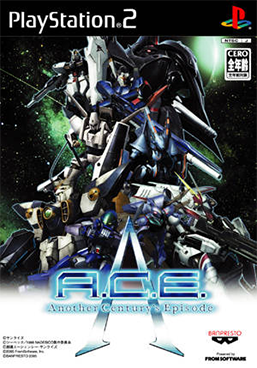
Another Century's Episode is a 2005 third-person shooter video game published by Banpresto in Japan for the PlayStation 2. The player controls a mech from one of nine different anime robot franchises to destroy opposing forces before they steal a prized energy source for devious purposes. The game is divided into several different missions, where players use their mech and arsenal of weapons to fulfill mission objectives, ranging from destroying enemy machines to protecting a specific target.

Another Century's Episode 2, abbreviated as A.C.E. 2, is a third-person mecha action video game produced by Banpresto and developed by From Software. It is the sequel to the popular 2005 game Another Century's Episode. It was released for the PlayStation 2 on March 30, 2006.

Xenosaga Episode I: Der Wille zur Macht is a role-playing video game developed by Monolith Soft and published by Namco for the PlayStation 2; the game was released in 2002 in Japan and 2003 in North America. It is the first entry in the Xenosaga trilogy and forms part of the wider Xeno metaseries. Gameplay features exploration of environments through a linear narrative, while battles use turn-based combat with the player characters fighting both on foot and piloting large mecha dubbed A.G.W.S.; combat in turn features a system of button combinations for attack types, and multiple leveling systems.

Super Robot Spirits is a 3D fighting game for the Nintendo 64, and a spinoff of the Super Robot Wars line of games. It was released only in Japan in 1998.
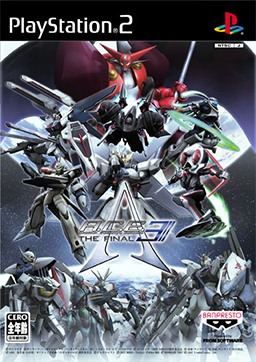
Another Century's Episode 3: The Final, abbreviated as "A.C.E.3", is a mecha action video game produced by Banpresto and developed by FromSoftware. It was released for the PlayStation 2 on September 6, 2007.

Another Century's Episode Portable is a mecha action video game developed by FromSoftware and published by Namco Bandai Games. It was released for the PlayStation Portable on January 13, 2011.

Robotics;Notes is a visual novel video game developed by 5pb. It is the third main game in the Science Adventure series, following Chaos;Head and Steins;Gate, and is described by the developers as an "Augmented Science Adventure". The game was originally released by 5pb. in Japan on the PlayStation 3 and Xbox 360 in 2012; the enhanced version Robotics;Notes Elite was released for PlayStation Vita in 2014, and for Nintendo Switch and PlayStation 4 in 2019. An English version of Robotics;Notes Elite was released by Spike Chunsoft in 2020 for Microsoft Windows, Nintendo Switch and PlayStation 4.
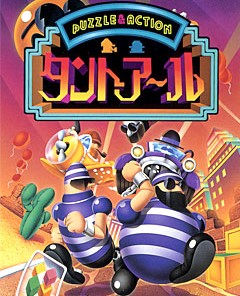
Puzzle & Action: Tant-R, is a puzzle video game developed and published by Sega in 1993 for the Sega System C in Japan. The first instalment in the Puzzle & Action trilogy, it is a spin-off of Bonanza Bros.. The characters from Bonanza Bros., Robo and Mobo, are featured as protagonists, functioning as detectives. A prison escapee is chased, and his henchmen interfere. A series of timed mini-games must be completed to defeat the henchmen. The game features references to western culture.
B.B. Studio Co., Ltd. is a Japanese video game development company. The company is a result of a merger between BEC and Banpresoft by their parent company, Bandai Namco Entertainment.

Super Robot Taisen OG Saga: Endless Frontier Exceed is a crossover role-playing video game developed by Monolith Soft and published by Namco Bandai Games for the Nintendo DS (DS) in 2010. Forming part of the Super Robot Wars series, Endless Frontier Exceed is a sequel to the 2008 DS game Super Robot Taisen OG Saga: Endless Frontier, carrying over its gameplay elements.
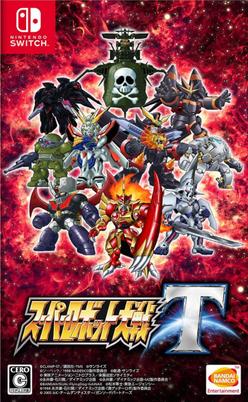
Super Robot Wars T is a tactical role-playing game developed by B.B. Studio and published by Bandai Namco Entertainment. It is the eleventh standalone entry to the Super Robot Wars series and the third installment of the "International Era" series, with the game's continued focus on the massive crossover between different mecha anime series released in Japan. Released for the PlayStation 4 and Nintendo Switch, it was also released in Asia on March 20, 2019.
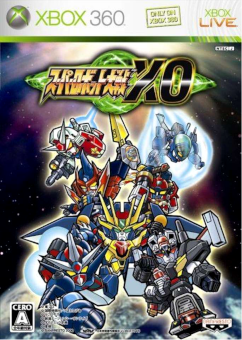
Super Robot Wars XO is a 2006 tactical role-playing video game developed and published by Banpresto for the Xbox 360 in Japan. Part of the company's Super Robot Wars series, it is an updated version of the GameCube installment Super Robot Wars GC (2004). Players control a fleet of mechas from a variety of super robot anime series, including Mobile Suit Gundam and Getter Robo, to defeat opponents on a grid-based map. XO combines tactical role-playing game mechanics with action sequences, which use stylized anime-esque cutscenes unique for each character.
















